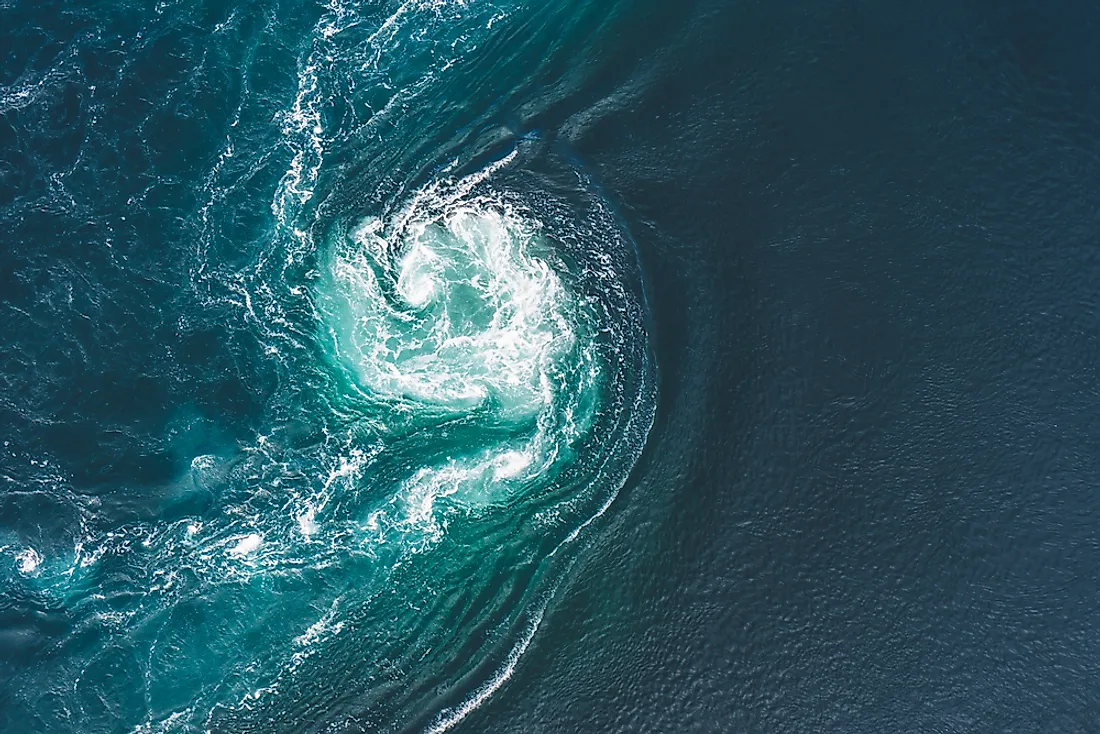What Are The Differences Between A Whirlwind And A Whirlpool?

Whirlwinds and whirlpools are two of the natural phenomena that occur in various regions of the world. Whirlwinds are described as wind vortexes that can happen anywhere in the world and are primarily caused by turbulence and instability in the wind flowing over a particular area. Whirlpools, on the other hand, are described as spinning bodies of water created when two currents intersect. Whirlpools are distinct from whirlwinds in some ways such as the regions they impact as well as the method of their formation.
The Formation
The first significant difference between whirlpools and whirlwinds is drawn from how they are formed. The creation of whirlpools is due to the interaction between water currents traveling in opposing directions. The interaction of the currents results in the formation of a swirling body of water and in some cases the whirlpools may be able to drag objects underneath the water surface. When whirlpools are strong enough to pull objects beneath the water surface, they are referred to as vortexes. Whirlwinds are formed as a result of air close to the ground having a significant difference in temperature to the air directly above it. The temperature difference results in a column of air rising and spinning as it interacts with the air above. The continuous spinning of the air results in the air on the lower levels being cooler than it generally is.
The Impact
Another area in which whirlwinds and whirlpools differ is the impact they have on their surroundings. Whirlpools mainly pose a danger to swimmers and small boats as the strong currents may overpower them causing drowning or capsizing. Relatively large ships can withstand the influence of the whirlpools. Ancient seafaring communities probably encountered some whirlpools strong enough to overpower their boats which inspired myths such as Charybdis among the Ancient Greeks. Whirlpools also have an impact on the weather experienced in an area according to information published by New Scientist. The research indicates that large whirlpools are the ones with an ability to influence the global climate by transporting vast quantities of heat and water across the world's oceans. The exact impact on the climate is unknown as scientists had previously thought that the heat carried by whirlpools was dispersed evenly but this has been proven to be false. The impact of whirlwinds depends on its size with small ones having a negligible effect as their rotation is interrupted as soon as they encounter an obstacle. Large whirlwinds such as tornadoes can cause massive damage due to their size and strength. According to data from official US government sources, on average tornadoes cause approximately 1,500 injuries and 80 fatalities annually.
Famous Whirlwinds and Whirlpools
Several whirlpools and whirlwinds have attained fame due to their massive size as well as the impact they have had on their surroundings. Saltstraumen and Corryvreckan are two of the most famous whirlpools as both are some of the most massive in the world. Whirlwinds that gain global fame are typically tornadoes with notable examples being the Oklahoma tornado of 2013 and the Daulatpur-Salturia tornado.











